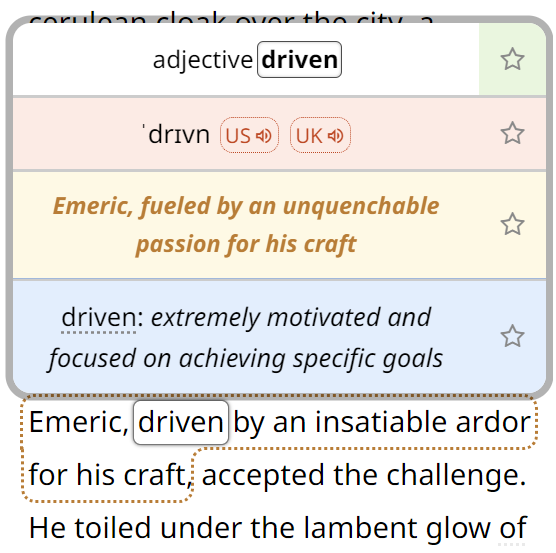 |
‘Translate to’ vs. ‘translate into’ in English
It is sometimes hard to tell whether to use “to” or “into” in English, and I am afraid people have to learn it by heart in most but the (...)
December 4, 2014 – Jakub Marian – English
|
 |
Articles before possessive ’s
Students who are unsure whether to use the definite or the indefinite article before a noun often try to camouflage this by using (...)
December 2, 2014 – Jakub Marian – English
|
 |
Splitting phrasal verb and preposition (particle) in English
Why do we say “he let her down” but not “he looked her after”? It has nothing to do with the fact that the first sentence expresses (...)
November 28, 2014 – Jakub Marian – English
|
 |
‘His doing’ vs. ‘him doing’ – possessives and gerunds in English
Some traditional grammarians would try to convince you that it is wrong to use the form object pronoun + gerund (e.g. “him doing”) when (...)
November 23, 2014 – Jakub Marian – English
|
 |
‘Consumer’ vs. ‘customer’ in English
English learners sometimes confuse the words “consumer” and “customer”. Although they look similar and the distinction is not important (...)
November 22, 2014 – Jakub Marian – English
|
By the way, have you already seen my brand new web app for non-native speakers of English? It's based on reading texts and learning by having all meanings, pronunciations, grammar forms etc. easily accessible. It looks like this:
 |
‘Block’ vs. ‘bloc’ (vs. ‘blog’) in English
Ok, the “blog” part of the title was a joke; most people know that blogs are websites like this one used to publish articles (usually (...)
November 12, 2014 – Jakub Marian – English
|
 |
‘Right side’ vs. ‘right-hand side’ in English
The expressions “right side” and “right-hand side” (and, correspondingly, “left side” and “left-hand side”) are interchangeable in most (...)
November 9, 2014 – Jakub Marian – English
|
 |
‘Half five’, ‘half seven’, ‘half ten’… what does it mean in British English?
The standard way to tell the time when it’s X:30 is “half past X”. For example, 5:30 is “half past five”, 7:30 is “half past seven”, and (...)
November 5, 2014 – Jakub Marian – English
|
 |
‘Hearable’ vs. ‘audible’ in English
Adjectives expressing the ability of a thing to be perceived using a sense are often derived from a root that differs from that of the (...)
October 31, 2014 – Jakub Marian – English
|
 |
Irregular English verbs: ring, sing, drink, shrink, sink, stink
There is a small class of irregular English verbs that follow the pronunciation pattern /ɪŋ/ → /æŋ/ → /ʌŋ/ in the past tense, (...)
October 29, 2014 – Jakub Marian – English
|

